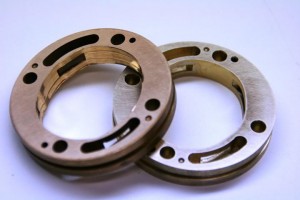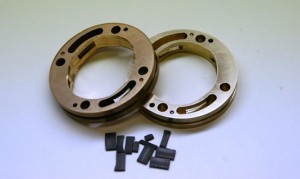What is cavitation?
You’ve probably seen the term thrown around in reference to fuel system components, but do you really understand what it is and why it’s bad? According to FUELAB, it’s the single most common failure in high-flow fuel systems and warrants a closer look.
What does cavitation mean?
What causes cavitation?
What are symptoms of cavitation?
FUELAB’s Jon Light tackles these questions below and, more importantly in our minds, provides helpful tips on how to avoid cavitation in your fuel delivery system:
The most common failure of high-flow fuel systems is cavitation, or “vapor-lock.” The combination of too much heat or too much inlet restriction can create this operating condition, where the liquid fuel literally boils inside the fuel pump assembly. Symptoms of this operating condition may include one or more of the following:
- Dramatic loss of flow rate
- “Gauge Bouncing”
- Ratchet or grinding sounds from pump
- Inconsistent or loss of fuel pressure
- Temperatures above 120°F (50C)
The end results are often permanent, even after the cause of cavitation is addressed. Typically, even short bouts of cavitation (depending on severity) will damage your fuel pump, resulting in direct loss of capacity and efficiency. This damage to the pump results in operating conditions that quickens cavitation exposure at each use. Eventually, the fuel system resorts to complete failure to build or maintain pressure. The loss of fuel-delivery pressure can also cause a lean-out condition that can result in engine damage.
This failure is generally not the result of any manufacturing defect, but of a fuel system design failure. The good news is, it can be avoided once you understand the two operating conditions that can create the cavitation:
- High operating temperatures
- High inlet plumbing restrictions
High Operating Temperatures
High fuel system operating temperatures can exist for several reasons, including high inefficiencies (for example, a worn or damaged pump), overly high fuel pressures, or high flow rates for long durations with low fuel amounts. High temperatures can also come from secondary sources of heat such as engine heat or exhaust heat.
Most high-flow EFI and carbureted fuel pumps are rated as “not continuous duty.” This is due to the amount of heat build-up that occurs over time as the fuel system is operating. When the fuel system has a high enough temperature — fuel temperatures above 120 degrees F — the fuel will start to vaporize at the pump assembly.
A rule of thumb is: If it’s hot enough to be uncomfortable to the touch, then it is too hot.
To allow for continuous or “street” use, voltage controllers are employed to reduce the pump speed during low engine demand operation to prevent heat build-up. FUELAB designed its Prodigy fuel pumps with a unique feature that allows reduction of speed without the need for an external pump controller. You can read more about that here.
High Inlet Plumbing Restrictions
Some refer to pumps as “pushers” or “pullers,” but the truth is all pumps are both.
This reference comes from the amount of resistance to cavitation a particular pump has versus another. Minimizing the amount of restriction feeding the pump’s inlet is a critical element to avoid cavitation. This is the main reason why typical OEM fuel systems have pumps mounted inside the fuel tank.
A straining filter is required for the inlet of the fuel pump. These fuel filters provide fine-enough filtering to protect the fuel pump, yet are coarse enough to not inhibit flow or capture enough particles to cause debris build-up. Finer filtration to protect the rest of the fuel system can be accomplished downstream of the fuel pump with a second filter.
Straining filters for fuel pump elements typically have micron ratings from 25 to 150 microns. FUELAB recommends the use of 75-micron filters for Prodigy Series fuel pumps (75-150 micron required). Many modern OEM straining filters are at a lower micron rating and made of plastic weave cloth. While these types of filters are adequate and desirable for OEM applications, the typical aftermarket fuel system has too high of a flow rate to accommodate this form of filter easily. The biggest mistake — and cause of almost certain doom for a high-flow fuel system — is to use a 10-micron filter upstream of the fuel pump.
Plumbing size and hose type also play a vital role in the effects of cavitation as well as general performance. The higher the flow rate, the larger the line size must be. Always avoid the use of check valves or cross-drilled fittings when plumbing upstream of the fuel pump.
What Cavitation Damage Looks Like
The pictures below show the damage cavitation can cause:






Does this information apply to just electric fuel pumps, or to all fuel pumps? Thanks.
This applies to any/all fuel pumps.
This may be a strange question but can this be caused by a large car audio build (151.23dB @33hz range18hz-47hz)? The fuel tank (gasoline) is 8 gallons. It seems to explain my issues to a T.
this shows little or no understanding of the problem
[…] drawbacks, however. They are susceptible to damage from contaminants and can experience cavitation (read more about cavitation here) because of the amount vacuum they produce. You can avoid cavitation issues by mounting the pump […]
When I first started driving I had a 77’ Chevy van that did that. To fix the problem I was told to clip a clothes pin on the fuel line close to the carb and a foot down the line. Believe it or not it worked. Vapor lock has been around for years and I thought that was the purpose of putting the pump in the tank.
Vapour lock (vapourizing of fuel, starving the system of liquid) and cavitation (bubble formation and bubbles collapse) is not the same thing!